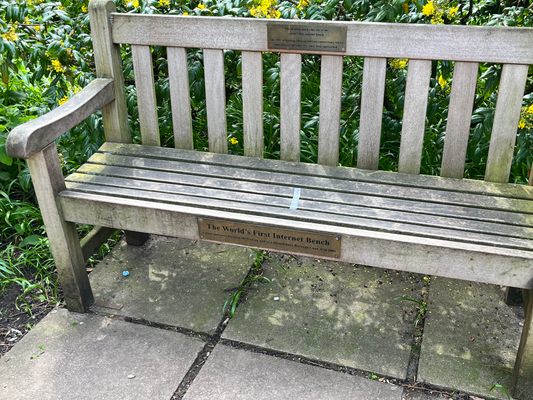About
The world's first internet-enabled park bench, also known as the "cyber seat," was installed on August 6, 2001, in the Abbey Gardens of Bury St Edmunds. Supported by MSN and the St. Edmundsbury Borough Council, it allowed seating for four people at a time who could plug their laptops into modem jacks for free internet access. The bench quickly gained popularity as a picture-taking location and attracted international television crews. Despite its deactivation with the advent of Wi-Fi, it holds a Guinness World Record for being the "oldest internet bench."
The history of the internet bench is as fascinating as its concept. The first user was Brian Bagnall, the mayor of Bury St Edmunds. Shortly after its installation, it was vandalized when someone tried to block one of the modem plugs. In an interesting turn of events, two teenagers discovered that the bench could be used to make free international calls and alerted the local council after attempting to reach Bill Gates. This led to engineers disabling the ability to make long-distance calls.
The bench was well-received, drawing media interest from around the world, including TV crews from Japan and Korea. To prevent further vandalism, the garden where the bench was located was locked at night. Today, the bench has a plaque stating that while it was innovative in 2001, it has been "superseded."
Related Tags
Know Before You Go
Entry to the Abbey Gardens is free. The gardens and the bench are accessible to those with mobility issues, with well-maintained paths suitable for wheelchairs and strollers.
Community Contributors
Added By
Published
June 16, 2019
Updated
July 31, 2024
Sources
- https://www.english-heritage.org.uk/visit/places/bury-st-edmunds-abbey/?utm_source=Google%20Business&utm_campaign=Local%20Listings&utm_medium=Google%20Business%20Profiles&utm_content=bury%20st%20edmunds%20abbey&utm_source=Google%20Business&utm_campaign=Local%20Listings&utm_medium=Google%20Business%20Profiles&utm_content=bury%20st%20edmunds%20abbey#beforeyougo
- http://news.bbc.co.uk/2/hi/science/nature/1475654.stm





































